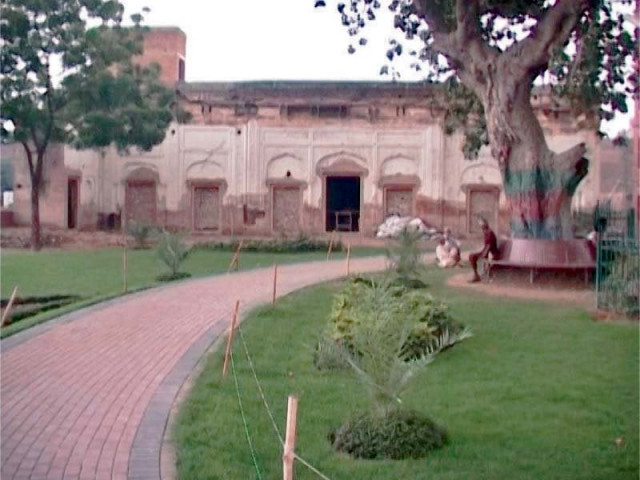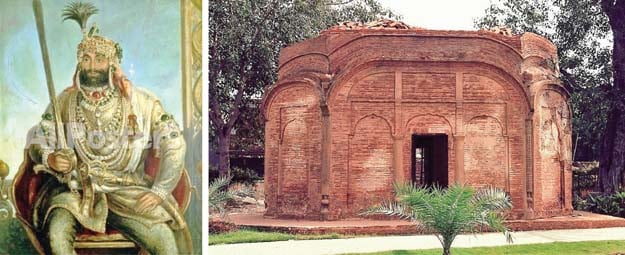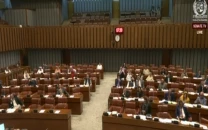Lahore finally completes the renovation of Sikh heritage sites
Owing to natural wear and tear, a large part of the baradari has withered away since it was first built

PHOTOS: SOHAIL DANISH
Sikh pilgrims and tourists from all over the world, including India, will now be able to visit the spot situated in Bhogiowal area of Lahore. Extending over a few acres of land, the tourist site includes the palace of Maharaja Sher Singh and his baradari.
Owing to natural wear and tear, a large part of the baradari has withered away since it was first built. However, the heritage department has spent millions of rupees to restore the original structure of the building. A park has also been constructed in front of the Baradari, with one part of the park housing the tomb of Hazrat Bilawal Shah. The Samadhi of Maharaja Sher Singh is situated a few steps away from the tomb.
According to heritage experts, the palace used to house Samadhis for the ancient ruler of Punjab, Maharaja Ranjeet Singh’s son Sher Singh, his wife Randhavi and son Prataab Singh. However, only one of the Samadhis, attributed to Maharaja Sher Singh, has survived to date.

The experts also believe that the fourth ruler of the Sikh sultanate, Maharaja Sher Singh and his 12-year- old son Prataab Singh were killed at the same location in 1843. Their bodies were cremated over here while Rani Randhavi was also burned alive per the Sati tradition prevalent at the time.
According to the director of the heritage department, Muhammad Afzal Khan, the place saw immense devastation during the time of Indo-Pak division but the real destruction was caused to the site in retaliation to the desecration of the Babri Mosque in 1992. At the time, mobs of angry people stormed the tombs and destroyed the baradari and Samadhis, setting the wooden roofs of the baradari ablaze.
In 2011, the provincial government of Punjab embarked on the restoration of the historically-sacred site for Sikhs and Hindus by renovating and refurbishing the structures built during the Mughal era. As a result, the walls, roofs and gates of the baradari have been repaired.
The lawn in front of the baradari has been transformed into a beautiful park by the Parks and Horticulture Authority (PHA). In addition, boundary walls have been constructed on all four sides of the baradari to protect the place from miscreants or encroachers.
The parks have been open to area residents, who frequent the park for morning and evening walks. According to Muhammad Ashraf Khan – a resident of the area – a few years ago, the place used to present signs of ruins. Only dust and mud could be seen at the place and it had become a den for drug addicts. Since its renovation, however, it has been completely transformed. He also said that that the place now adds to the beauty of the city and is now worth a visit.
The place is also visited by foreigners, especially Sikhs, who are keen to know about their past by looking at and studying the structures.
Muhammad Afzal Khan further said that the Punjab government has decided to showcase the hidden heritage of Lahore to the world and these sites will be promoted for the purpose of tourism. The federal government will be reminded to take notice of the thousands of Sikh pilgrims from various countries, including India, who wish to visit Pakistan to visit the holy site and perform their rituals.
Published in The Express Tribune, June 13th, 2019.



















COMMENTS
Comments are moderated and generally will be posted if they are on-topic and not abusive.
For more information, please see our Comments FAQ